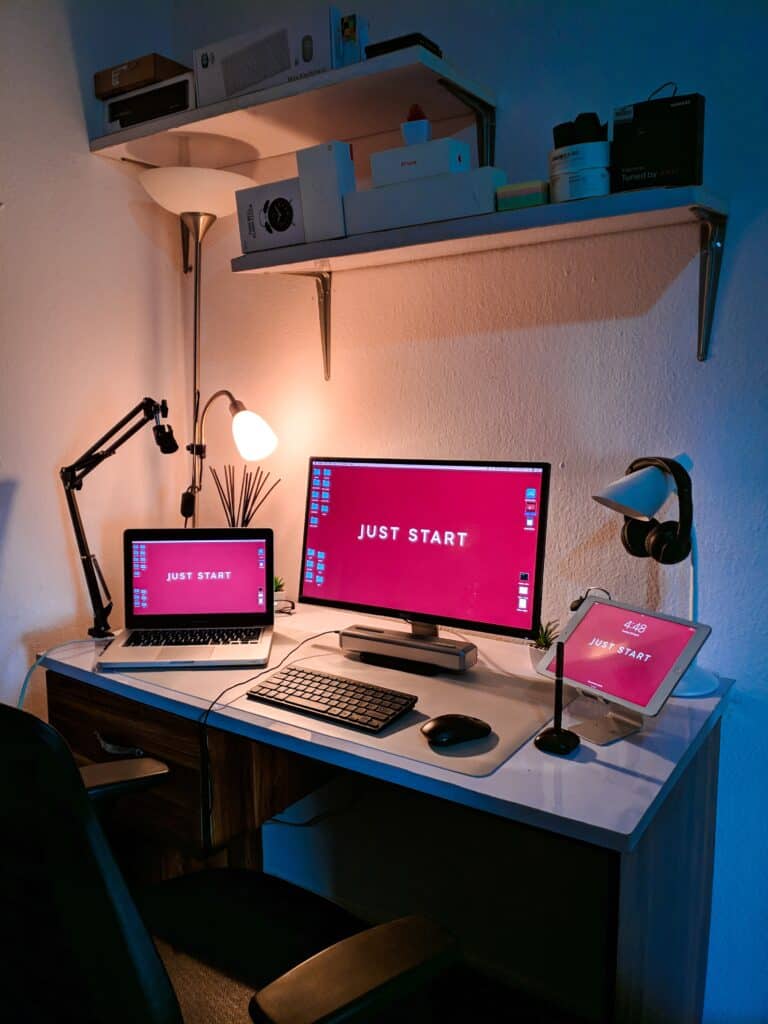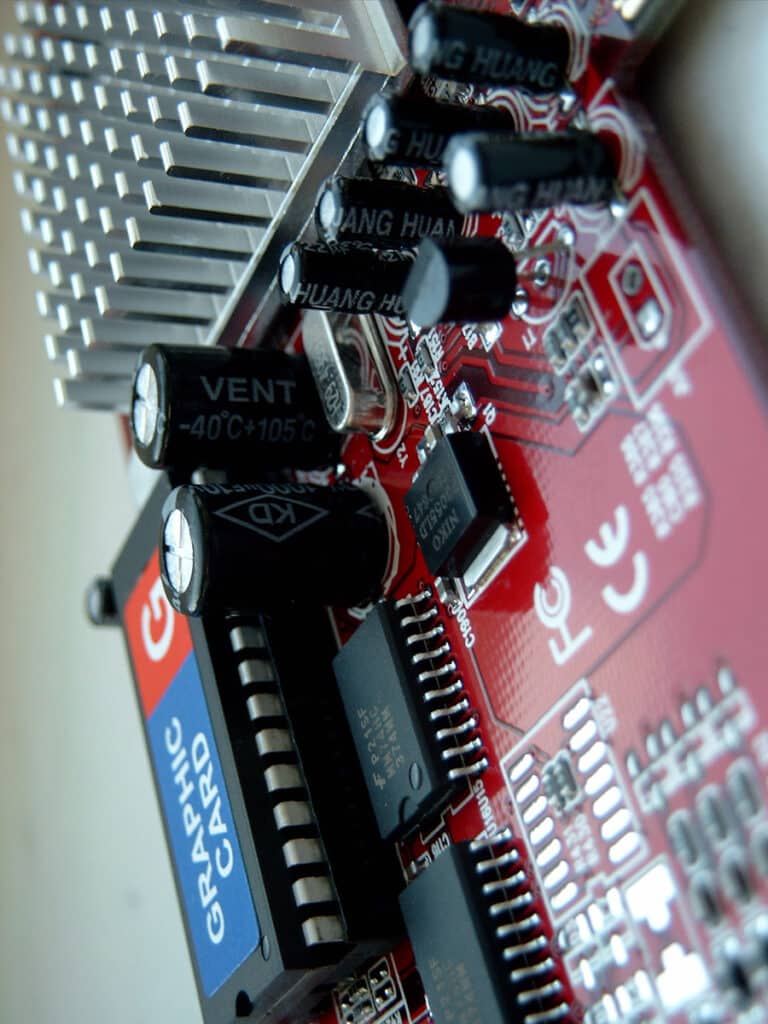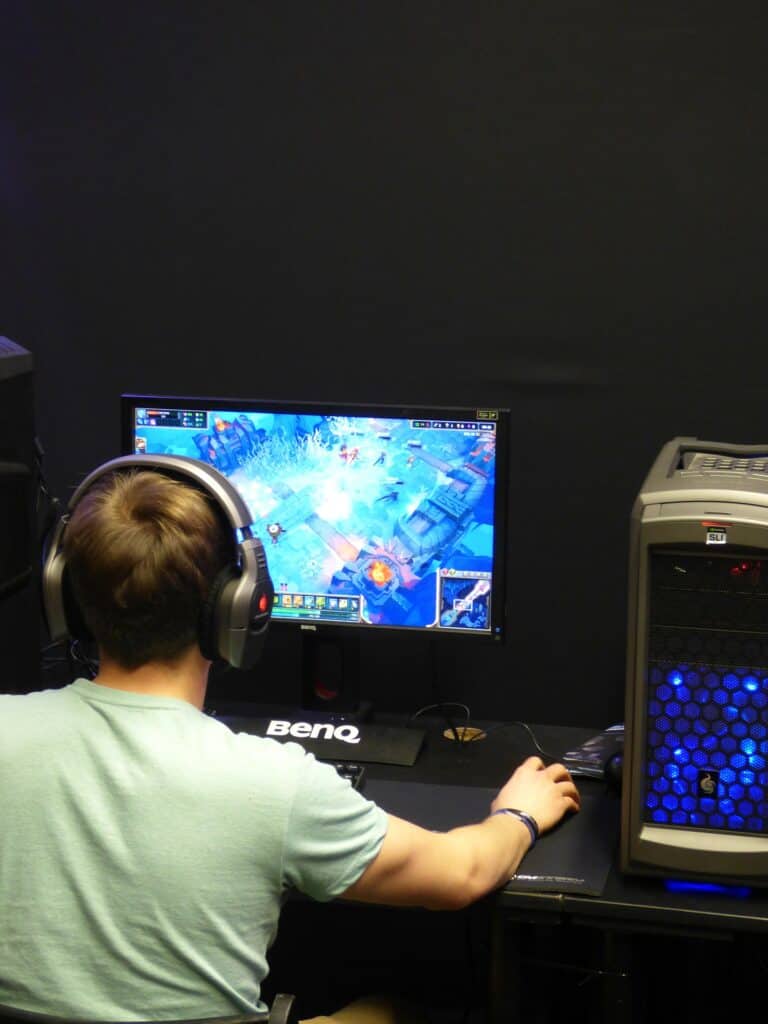Today, using a dual-monitor setup has become a regular practice for many computer users. When it comes to productivity, working using one single screen is too restricting! Once you get used to using more than one display, you don’t want to get back.
However, why should you stop at only two screens? Having multiple monitors can make a huge impact on your life. That being said, it’s not a matter of just plug and play. You need to learn how to setup 3 monitors on one computer.
How to Setup 3 Monitors on One Computer
Step One: Define Your Needs
Depending on your user needs, your device’s configuration will change. You might want to use 3 monitors to compare spreadsheets side-by-side, work on long documents, edit videos or even for streaming while you play your favorite games.

For example, if you’re a gamer you will need to be sure of the capacity of your monitors to play the same images simultaneously and with the expected level of resolution. On the other hand, if you’re a writer or a graphic designer, you can use a monitor in a vertical orientation to better see long documents or designs.
Step Two: Check Your Devices
Next, you should check where are you stand, to get what you want. Every computer device has a default configuration and a default number of ports available. You should check if your actual configuration is enough for three displays.
Check your Ports
This is a physical and a logical check. To do this, first, take a look at the availability of external ports of your device. If it is a Desktop, check in the back of the case; if it is a Laptop, please check mostly in the right and left sides.
Let’s keep in mind that if we want three displays, we’ll need two ports for our two new monitors, (our default monitor is the display number three).
Depending on the model of your desktop or laptop, you may find one or more ports in your equipment: HDMI; VGA, DVI and more recently, Display Ports. If you have at least two ports, you are on your way. If you have just one, you need to make some adjustments.
Check the Graphic Card
For our logical check we should verify if our graphic card (Nvidia or AMD) supports three displays at the same time. To do that, we just have to google the name of our graphic card + “Three ports”.
That will take us to the website of Nvidia or AMD, to see the specifications of our card. It’s important to verify if our graphic card is “discrete”. This means that it handles three or more displays simultaneously.
The graphic card is the nervous system of the display on our computer. This card is usually attached to the motherboard. Both graphic card and motherboard have their own ports. Depending on our need for ports, we may use one or two. As a general recommendation, you should use the graphic card ports instead of the motherboard ports.

If you want this, you need a discrete graphics card. If this is the case, and besides you have two physical ports in your device, your next task will be to buy your brand-new monitors and configure them.
Most of the graphic cards are enabled to handle two displays simultaneously, but not three, even when they have three physical ports. On the other hand, when it comes to laptops, most of them are settled with two ports, but rarely with three.
In that case, you can either buy a new graphic card. Or buy an External MultiDisplay Adapter. A somehow expensive alternative, with some precautions required.
Step Three: Select Your Monitor and Hardware
Once you know clearly what do you need, you can go shopping.
What Monitors to Buy
When it comes to your display, there isn’t a red line. Buy the model of monitors you want, except if you are a gamer because you will benefit from the most advanced monitor available.
You might want to avoid VGA monitors altogether. They don’t have the same level of resolution as more modern technologies as HDMI or DVI. If your budget allows it, monitors with Display Port MultiStreaming Support are better. However, this requires you have a Display Port in your device, too.
The LG 32MA70HY model is a fine example of a good monitor with a wide range of ports and a fine resolution for an office/work requirement.
What Graphics to Buy
To avoid compatibility problems, try to buy the same brand of the graphic card as the default card inside your device (Nvidia or AMD).
Depending on the choice you made, your graphic card is going to demand more power than your default card. That maybe exceed the capacity of your device, and you need to buy a Modular Power Supply.
You should be aware of the new card dimensions to see if they fit in your device. It’s good to look for technical help with this replacement.
Step Four: Set Up Your Display
You are almost at the end of the road. The next step is to set everything up.

Keep in mind that your objective here is to set your displays in your OS the same way you will set them in your physical desk: Determine which one is the main display, which is going to be on your left and which is going to be on your right.
Note: Before you begin, be sure all your new hardware is settled and wired: Monitors; Power Supply if its required, and of course the new graphic card.
Detect and Identify
Right-click on your desktop. Select “Display Settings”
The Display Menu Settings will show up. You will find several sections like “Brightness”, “Color”, “Scale and layout” and “Multiple Displays”. Go to “Multiple Displays”.
In “Multiple Displays”, Windows 10 will show you all the monitors you have. You should be watching your three displays. If this is not the case, click on “Detect”, and you should watch all of them.
Once you have all your displays identified, it’s time to arrange them.
Click on your monitor number 1 and click “Identify”. In the monitor on your left, you should see a number 1.
If the monitor with the number 1 is not your left monitor, then drag it with your mouse and place it in the location you assigned (number three, for example).
Now go, to the “Multiple Displays” Menu and select the option “Extend these displays”. This will allow you to share the same display in the three monitors.
You finished the basic configuration of your 3 Displays.
Step Five: Update your Drivers
You are almost done!
Finally, it’s convenient to update all your drivers before using your new display. This applies to your new monitors and your new graphic card.

Just google the name and model of your graphic card and “driver”. Google will show you the link to the webpage of the manufacturer. Download the executable file, and install it. The same applies to your monitor’s drivers.
Buying an External MultiDisplay Adapter
If you don’t want to buy a new graphic card, or you find the procedure too long or complicated, an alternative that will allow you to enjoy your three-monitor display, is using some hardware solutions available in the market, like a Docking Station. This device, connected to any free port of your Desktop, can be connected to several monitors.
A Docking Station is a very practical alternative, keep in mind at least two recommendations, just like with other hardware alternatives: they’re expensive, and they will demand an increase of power and heat of your computer. So, you should take proper measures, as we have mentioned about cooling your device and provide extra power.
Conclusion
There’s no reason why you shouldn’t enjoy having 3 monitors on one computer. While it’s not just as easy as plugging a new monitor to the computer and call it a day, learning how to set up a multi-monitor set up on your computer it’s achievable, and it makes a great difference in how you use your computer.
